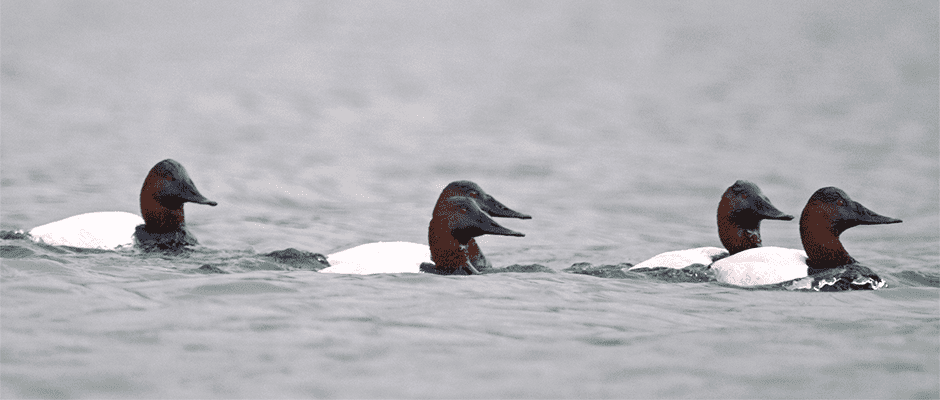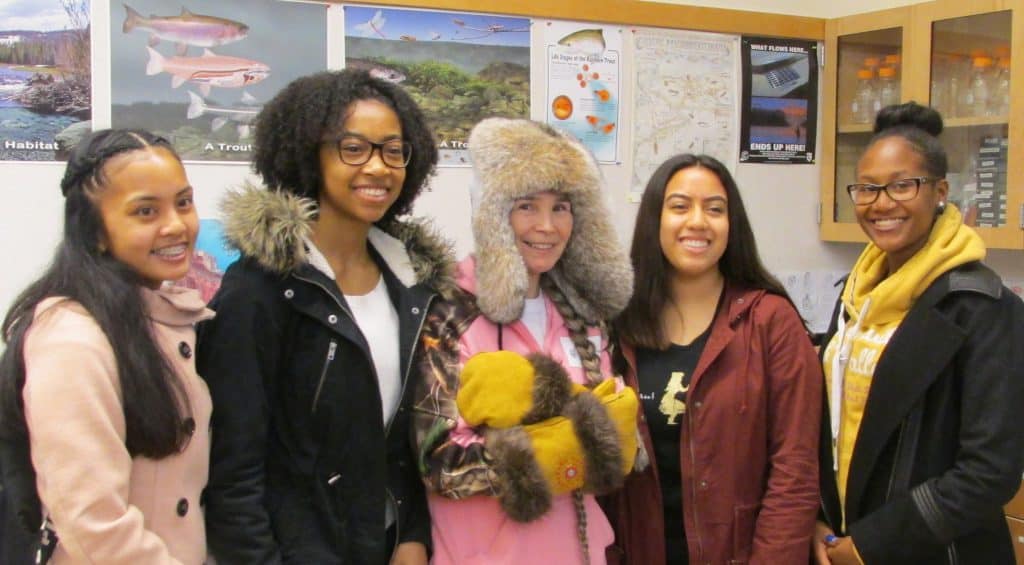Share this article
Canvasback connects ‘sister refuges’ in AK, CA
At first glance, an urban national wildlife refuge on the coast of California and a remote refuge in the interior of Alaska don’t seem to have much in common. Take a closer look and the connections become clear and important.
The striking and regal canvasback, the largest diving duck in North America, is the primary species that connects Yukon Flats National Wildlife Refuge in Alaska to San Pablo Bay National Wildlife Refuge in California. In the 1950s and ‘60s, biologists banded thousands of ducks on what is now Yukon Flats Refuge. Of these banded ducks, 313 canvasbacks were harvested and recovered – and 89 of those were returned from hunters in the San Francisco Bay area.
So when refuge staff at Yukon Flats sought to establish a “sister refuge” relationship with a Lower 48 refuge – a relationship based on a shared resource – they followed the canvasbacks to San Pablo Bay Refuge in San Francisco’s North Bay. This pairing of refuges provides an opportunity to educate residents in the Bay Area and the Yukon River Basin about how wildlife refuges function together as a national network of lands despite their apparent differences and the great distances that separate them.
Arctic National Wildlife Refuge in Alaska has a sister refuge relationship with Tualatin National Wildlife Refuge in Oregon, which gets more visitors on a busy afternoon than Arctic Refuge gets in a year. Arctic also has a sister relationship with the Changbai Mountain National Nature Reserve in China.
In February, three Yukon Flats Refuge employees “migrated” to the canvasbacks’ wintering habitats in the North Bay with a simple goal: to reach a new audience with knowledge that Yukon Flats Refuge exists. Although a seemingly basic message, most people are unaware of this hidden and yet vitally important conservation gem in Alaska.
Presentations to Bay Area classrooms, refuge staff and Friends group members, and attendees of the 21st annual San Francisco Bay Flyway Festival showed how integral Yukon Flats Refuge is to the waterfowl flyways as well as to the Alaska residents who subsist on the refuge’s resources.
Julie Mahler, refuge information technician at Yukon Flats, has spent her entire life within the Yukon Flats Basin. She captivated audiences young and old with stories about raising her family while living off the abundant, but challenging, resources in the wilds of Alaska. Bay Area residents could only imagine the isolation and self-reliance that are the reality of living in such a remote place. A home without electricity or running water, a town without a grocery store or gas station – not to mention the nearest neighbor a three-day boat ride away! Mahler also brought examples of her homemade handicrafts to demonstrate her and her family’s reliance on the Yukon Flats resources: a hat made of lynx fur, boots sewn from caribou and moose hides, and mittens she lined with beaver fur.
“With Yukon Flats taking such initiative and San Pablo Bay able to host their visit made a brilliant way to help a population understand a way of life unlike anything they know” says Don Brubaker, manager of San Pablo Bay Refuge. “People gasped and felt sorry for the creatures relieved of their furs, yet when they hear that a run to a store can be a 10-day round-trip, they begin to understand the animal is a clothiers and deli all in one!”
Through the presentations, Bay Area residents gained a better understanding about this treasured place in the heart of Alaska. Even today in modern America, wild and unaltered landscapes such as Yukon Flats still remain for the American public to enjoy.
The U.S. Fish and Wildlife Service is a Strategic Partner of TWS.
Header Image: The canvasback is the largest diving duck in North America. ©Peter Pearsall/USFWS









